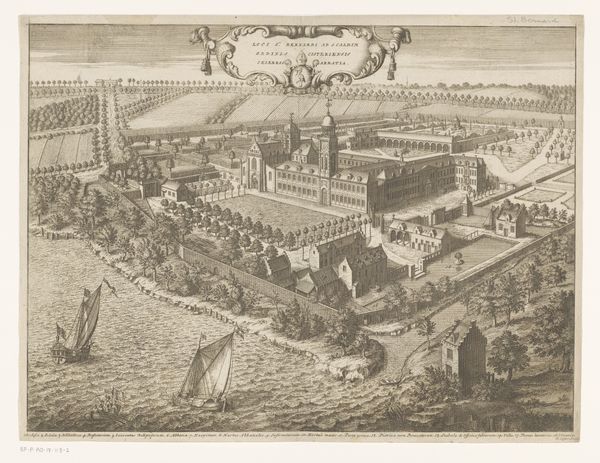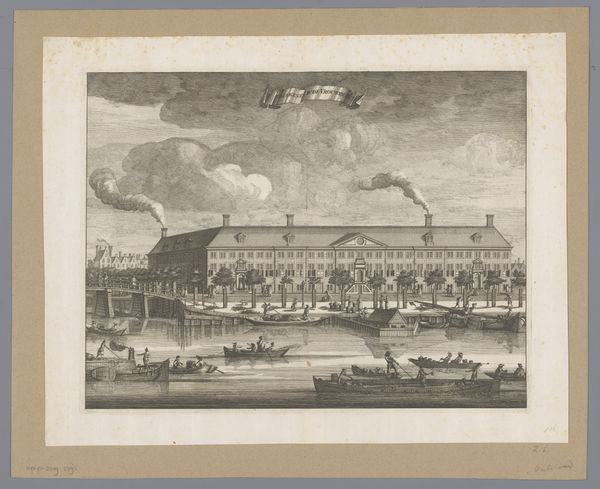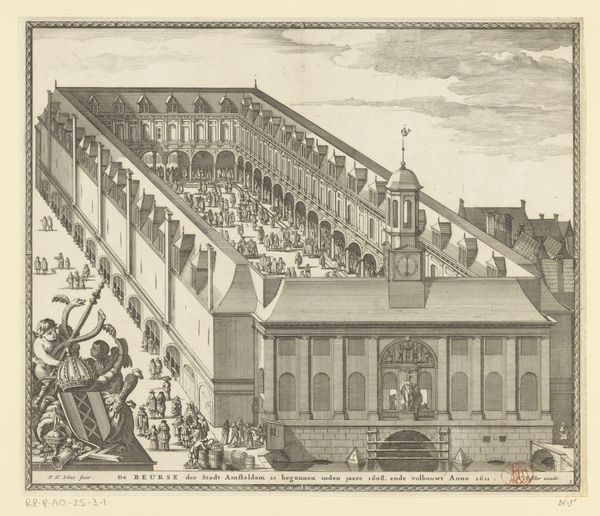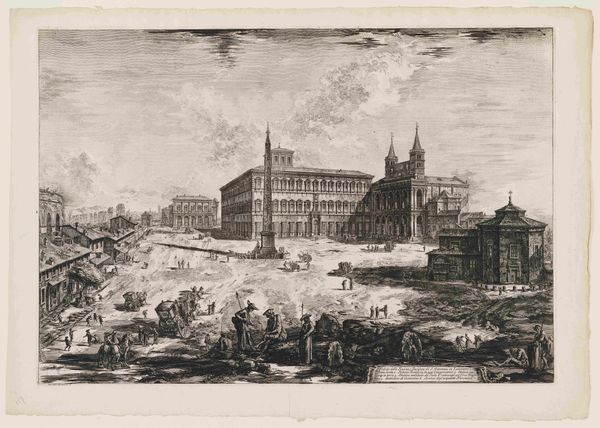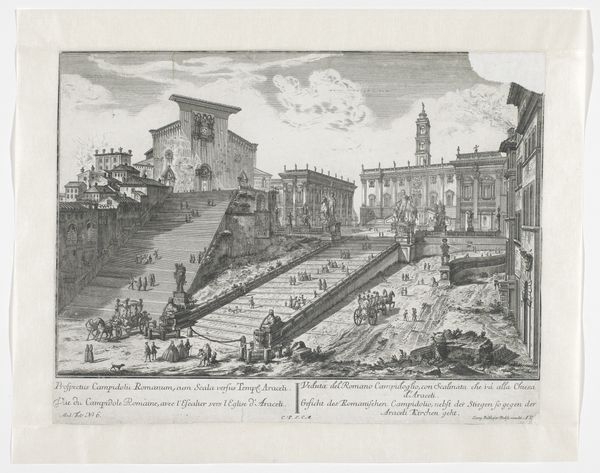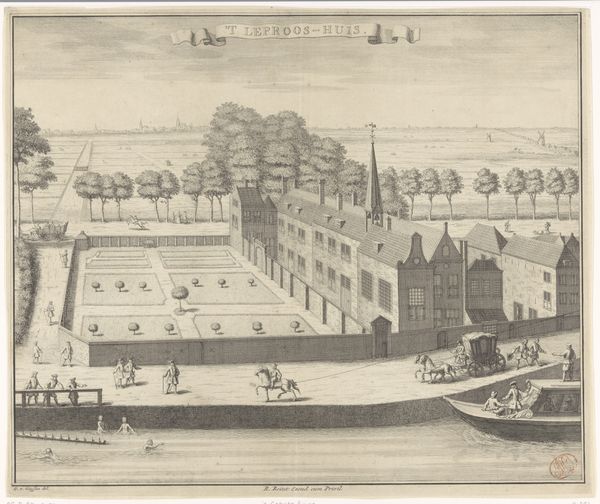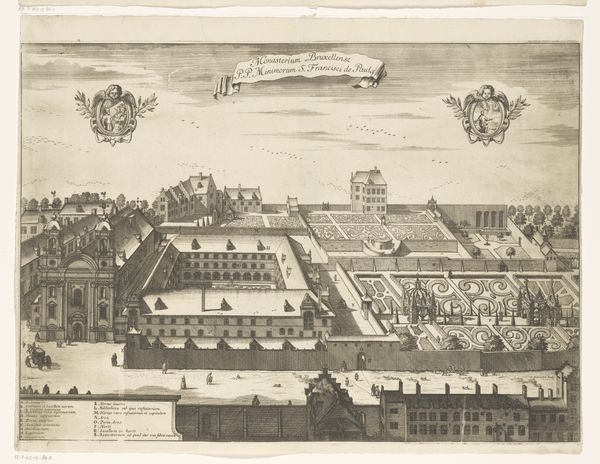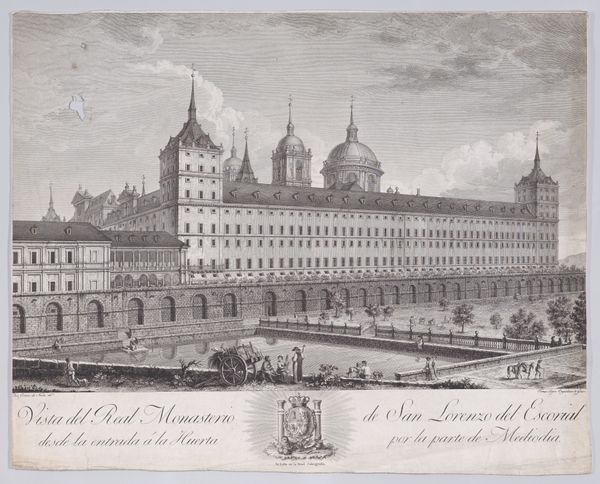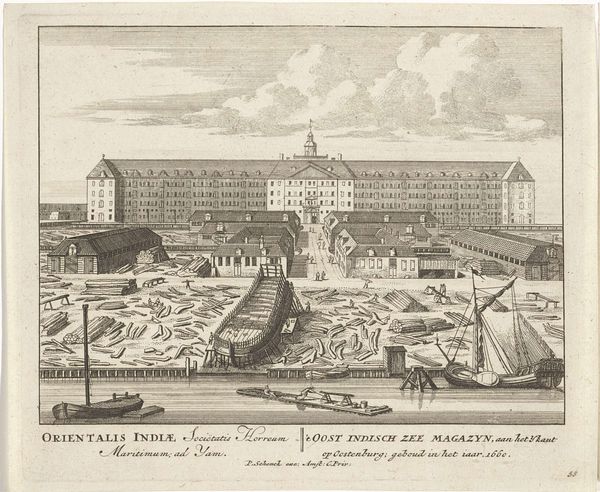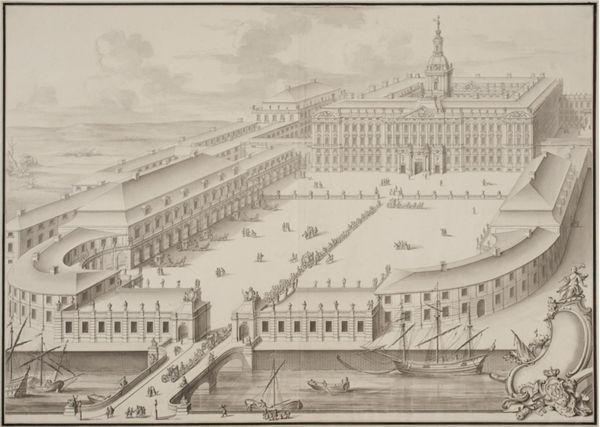
Gezicht op het Oost-Indisch Zeemagazijn en de scheepstimmerwerf op Oostenburg te Amsterdam 1726
0:00
0:00
josephmulder
Rijksmuseum
print, etching
#
dutch-golden-age
# print
#
etching
#
landscape
#
cityscape
Dimensions: height 262 mm, width 337 mm
Copyright: Rijks Museum: Open Domain
Curator: This print, created by Joseph Mulder in 1726, presents a detailed "View of the East India Naval Depot and the Shipyard on Oostenburg in Amsterdam." It’s a beautiful etching, currently held in the Rijksmuseum. Editor: My first impression is…organized chaos. There's an almost unbelievable amount of activity crammed into this image. It's incredibly busy, yet meticulously rendered. Curator: The Dutch Golden Age was fueled, in no small part, by the activities depicted here. Mulder's work provides insight into the labor practices of the time and the scale of the Dutch East India Company's operations. We can almost trace the routes of resource extraction through its architecture. Editor: It's like peering into the engine room of global trade! You can almost hear the hammers and shouts. I keep getting drawn back to the building itself. It looms. A total power statement rendered in brick and mortar. Does anyone have any thoughts on its relationship with labor at this time? Curator: Absolutely. The vastness of the building dwarfs the workers, creating a visual hierarchy. Furthermore, while the Dutch Golden Age brought prosperity to some, it was built on exploitation and colonialism, including forced labor abroad. So the print isn't merely a neutral depiction of shipbuilding; it's a testament to systems of power and extraction that operated, quite literally, on an industrial scale. Editor: Exactly. It reminds me of Piranesi, the way the structure embodies and seems to mock human efforts. I'm stuck imagining what each person's day consisted of. Do we know any more about the individuals? Curator: Archival records allow us to reconstruct, in part, the identities and working conditions of people present in the work, even if they're reduced to generic forms in the image itself. But doing so compels us to look beyond the "picturesque" scene toward a complex reality. Editor: It's a chilling insight, a vital layer to appreciate beyond the historical quaintness. I am struck now by how this image functions as both a record of burgeoning global trade and a silent indictment of its cost. Thank you for offering the relevant perspective, there is an undeniable grandeur to the print but contextualizing the ethical framework helps to view it properly. Curator: Indeed. Engaging with art like this compels us to acknowledge that the aesthetic and the political are often inextricably linked. I, in turn, appreciate your attention to lived human experience and emotion—reminding us that archives aren't just lists of names, they are repositories of lost voices and bodies.
Comments
No comments
Be the first to comment and join the conversation on the ultimate creative platform.
